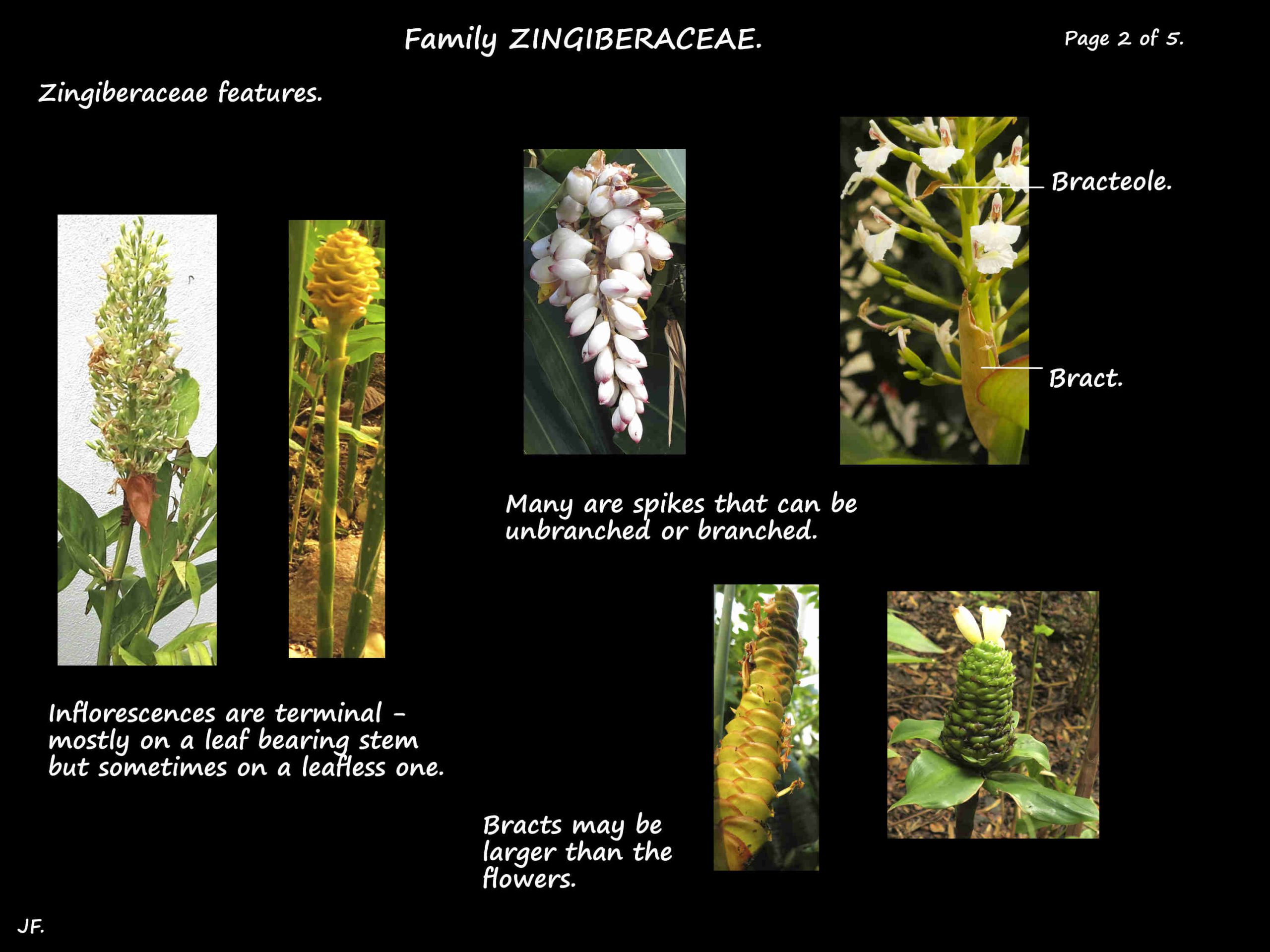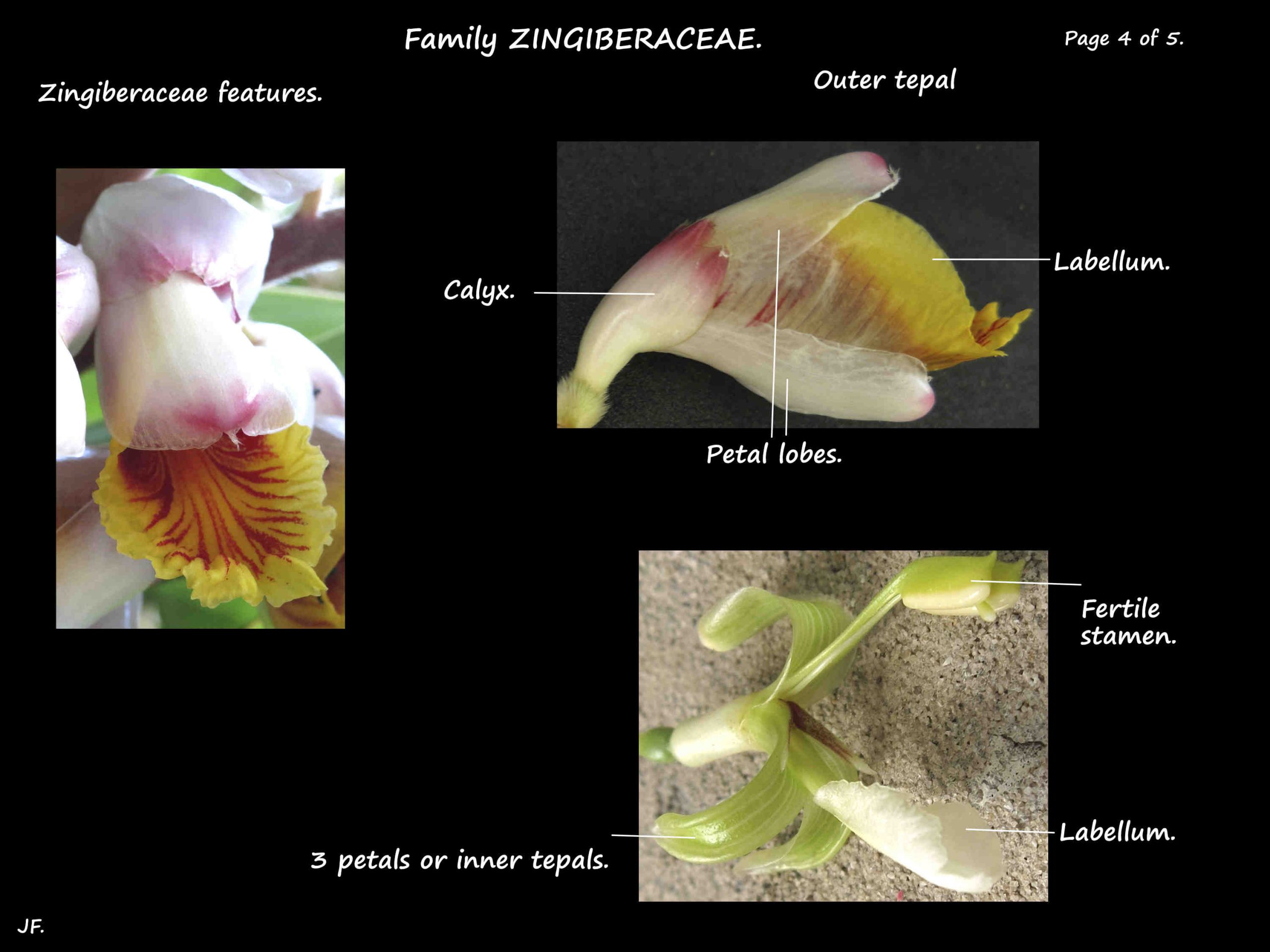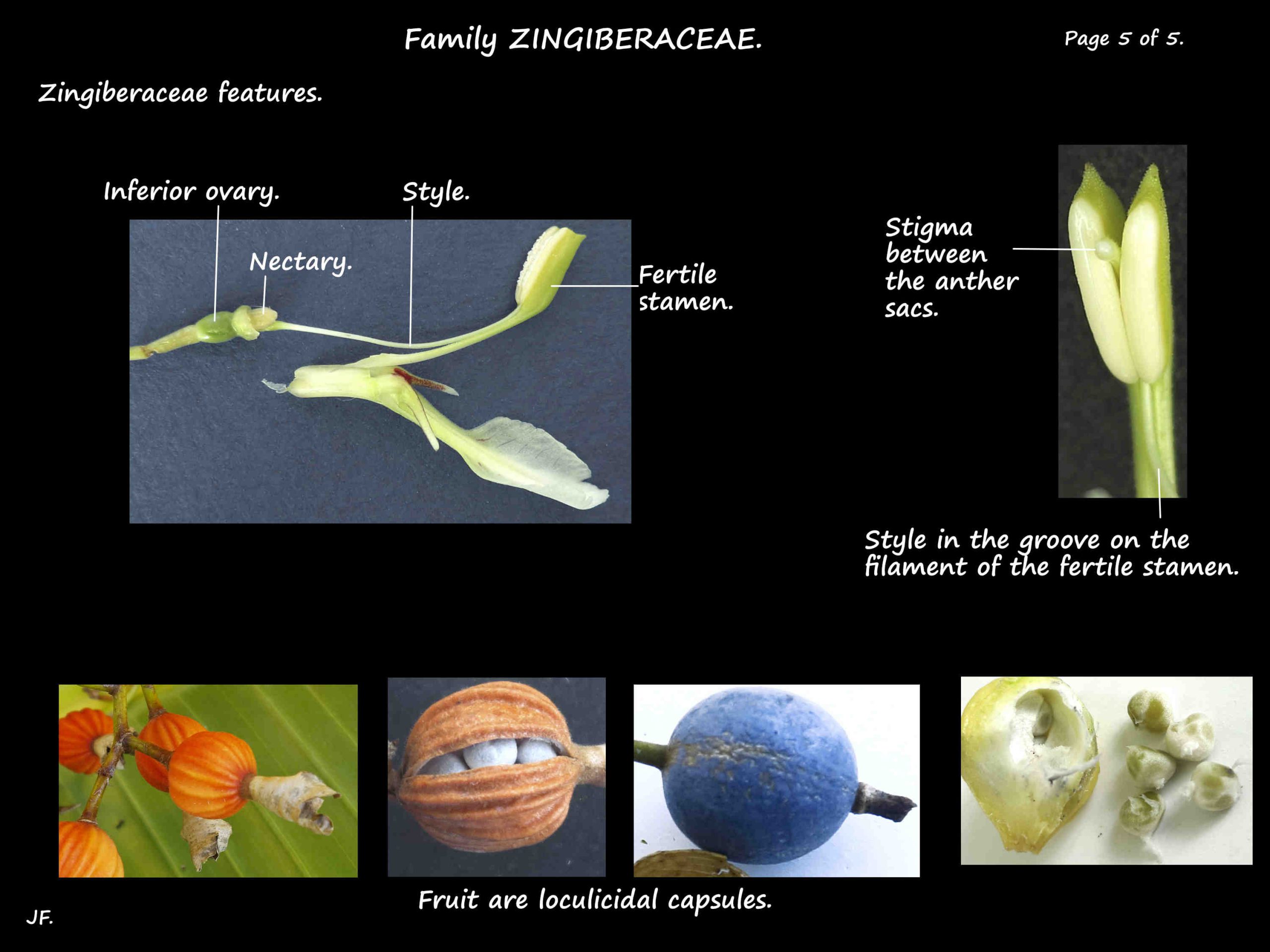Zingiberaceae.
The ginger family has 50 to 56 genera and 1300 to 1600 species.
They are native to Asia, Africa and the Americas with 7 native genera in Australia.
They are the source of spices such as ginger, turmeric and cardamom.
Some are used as ornamentals.
Well known genera include Alpinia, Curcuma, Hedychium and Zingiber.
There are different classifications into subfamilies and tribes.
Plants are aromatic, perennial herbs growing from rhizomes (underground stems).
The stems are short and what appear to be stems are often pseudostems formed
by the overlapaping bases of the leaf sheaths.
The simple leaves are almost always alternate and in 2 ranks (distichous).
The base of the leaf may form an open sheath (edges not fused) around the stem.
They may or may not have a petiole between the blade and the sheath.
The basal leaves may be just a sheath with no blade.
There is usually an appendage or ligule at the junction of the leaf base and sheath.
The veins are penni-parallel.
The terminal inflorescences may be a solitary flower or branched or unbranched clusters.
Some have flowers on a separate stem from the leaves.
There are spirally arranged bracts but bracteoles may be present or absent.
The flowers may or may not have a stalk.
The bisexual, often brightly coloured flowers are irregular in shape.
The sepal bases form a tube with 3 lobes or it may be split down the side like a spathe.
The corolla tube has one large and 2 smaller lobes.
There are 5 stamens in 2 whorls but only 1 is fertile.
In the outer whorl the posterior 2 are staminodes that may lie above the floral tube,
be fused to the base of the labellum or be lobes on the fertile stamen.
They can be conspicuous, small or a absent.
The anterior one is very small or absent.
In the inner whorl the posterior one is the fertile stamen and
the anterior or lateral 2 are fused to form the petal-like labellum.
The anther of the fertile stamen opens inwards via a longitudinal slit or occaionally a pore.
The inferior ovary, of 3 carpels, has 1 or 3 locules each with 4 to many ovules.
The style lies in a groove on the filament of the fertile stamen and between the anther sacs.
The single or 3-lobed stigma sits above the anther.
There are up to 3 nectaries on the top of the ovary around the base of the style.
There may also be glands on the staminodes.
The fruit are a dry or fleshy loculicidal capsule with 3 chambers.
They may sometimes resemble a berry.
J.F.







